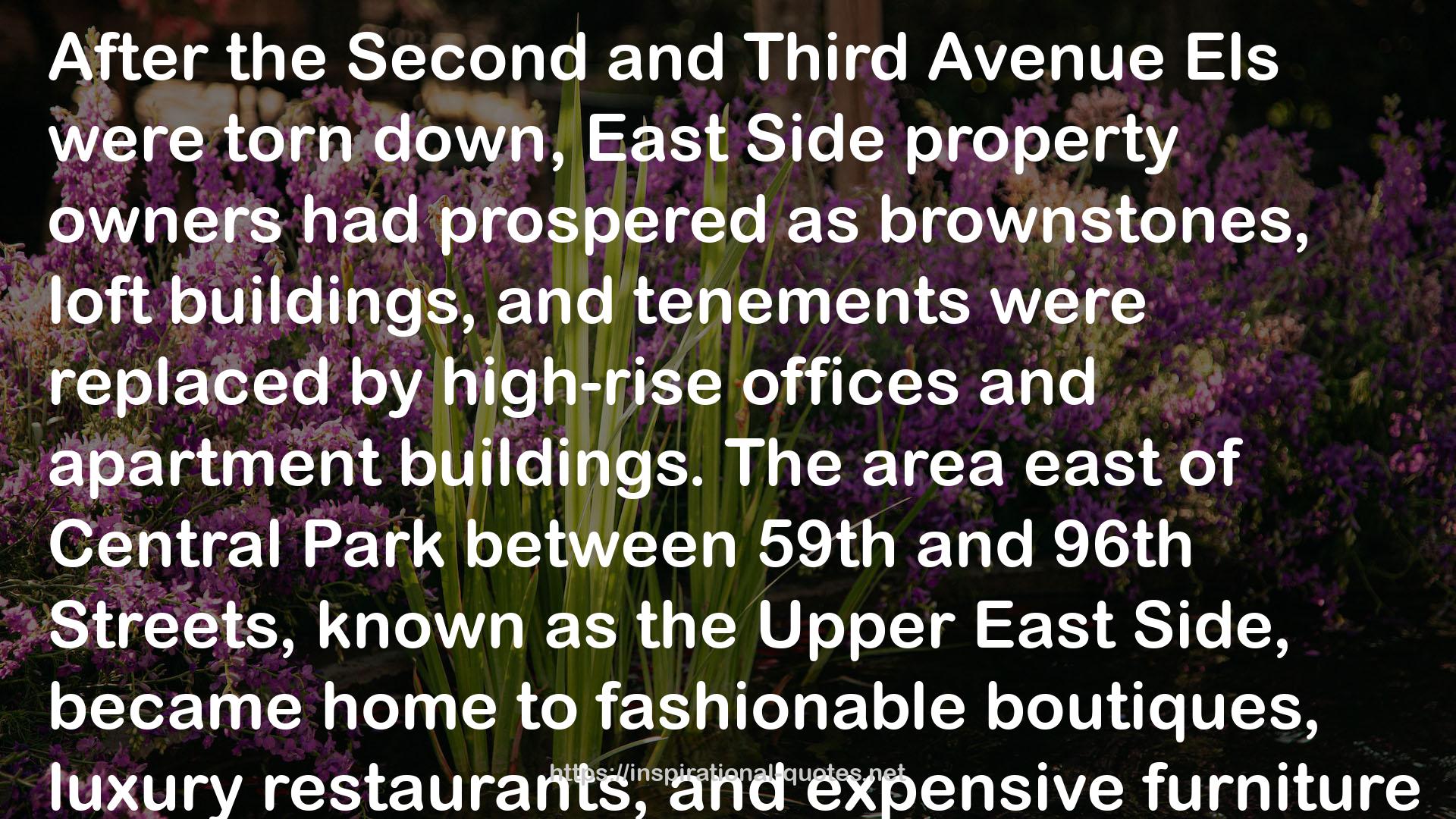" After the Second and Third Avenue Els were torn down, East Side property owners had prospered as brownstones, loft buildings, and tenements were replaced by high-rise offices and apartment buildings. The area east of Central Park between 59th and 96th Streets, known as the Upper East Side, became home to fashionable boutiques, luxury restaurants, and expensive furniture houses. With thousands of well-educated young professionals moving there, the neighborhood contained the greatest concentration of single people in the entire country.3 Even though the number of cars registered in the United States grew by 47 percent in the 1950s, New York City’s economy still relied on the subway in the early 1960s. During the 8:00 to 9:00 a.m. rush hour, 72 percent of the people entering the CBD traveled by subway, which could move people far more efficiently than automobiles. Each subway car could carry approximately one hundred people, and a ten-car train could accommodate a thousand. Since trains could operate every two minutes, each track could carry thirty thousand people per hour. By comparison, one lane of a highway could carry only about two thousand cars in an hour.4 Although Manhattan and the region were dependent on the rail transit system, 750,000 cars and trucks were entering the CBD on a typical weekday, three times more than had been the case thirty years earlier. Many New Yorkers expected the city to accommodate the growing number of cars. For example, the Greater New York Safety Council’s transportation division claimed that Americans had a fundamental freedom to drive, and that it was the city’s obligation to accommodate drivers by building more parking spaces in Manhattan. The members argued that without more parking, Manhattan would not be able to continue its role as the region’s CBD because a growing number of suburbanites were so highly conditioned to using their cars.5 In "
― , Last Subway: The Long Wait for the Next Train in New York City
